From Martin Margiela Circa 2006, Lessons in Resilience
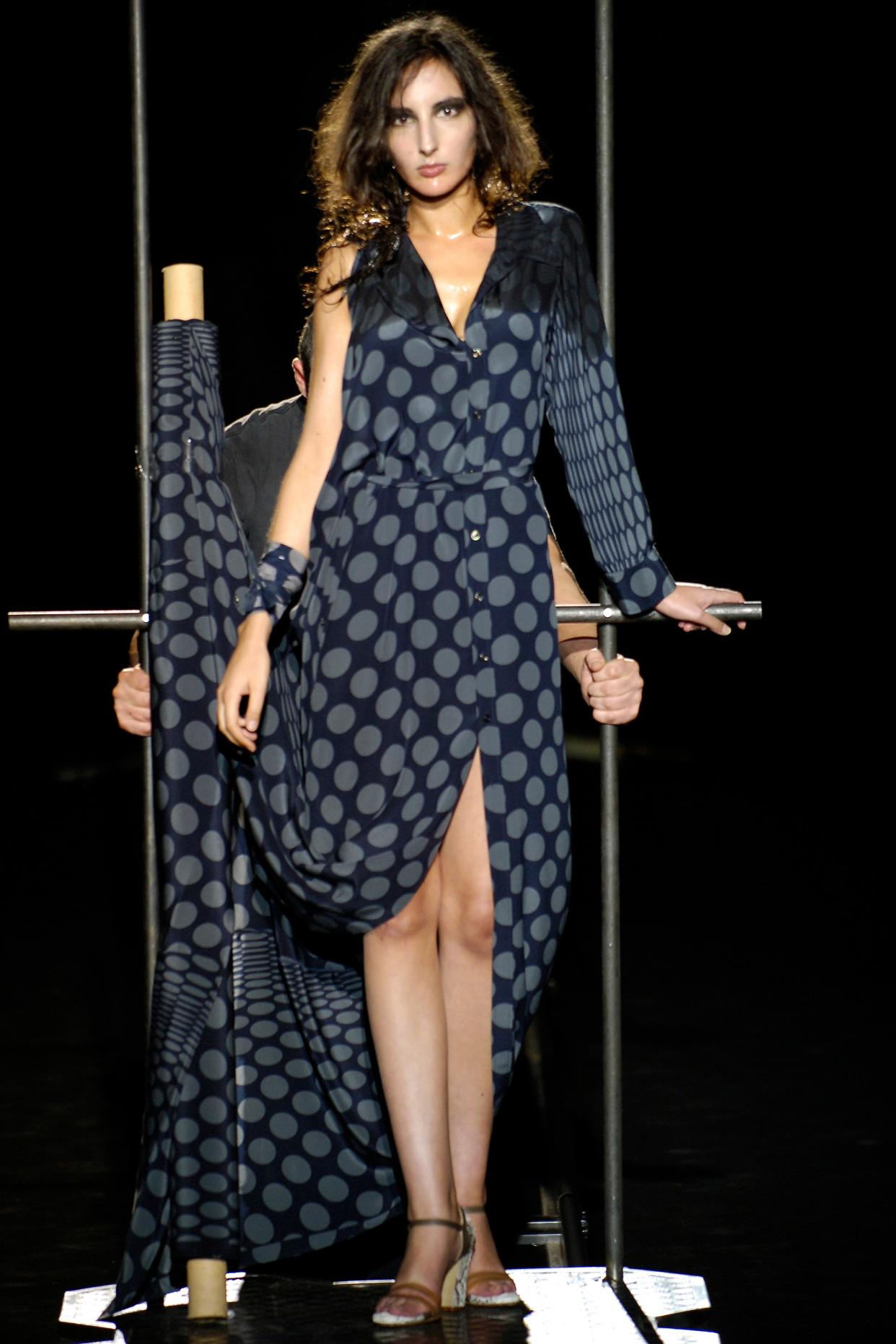
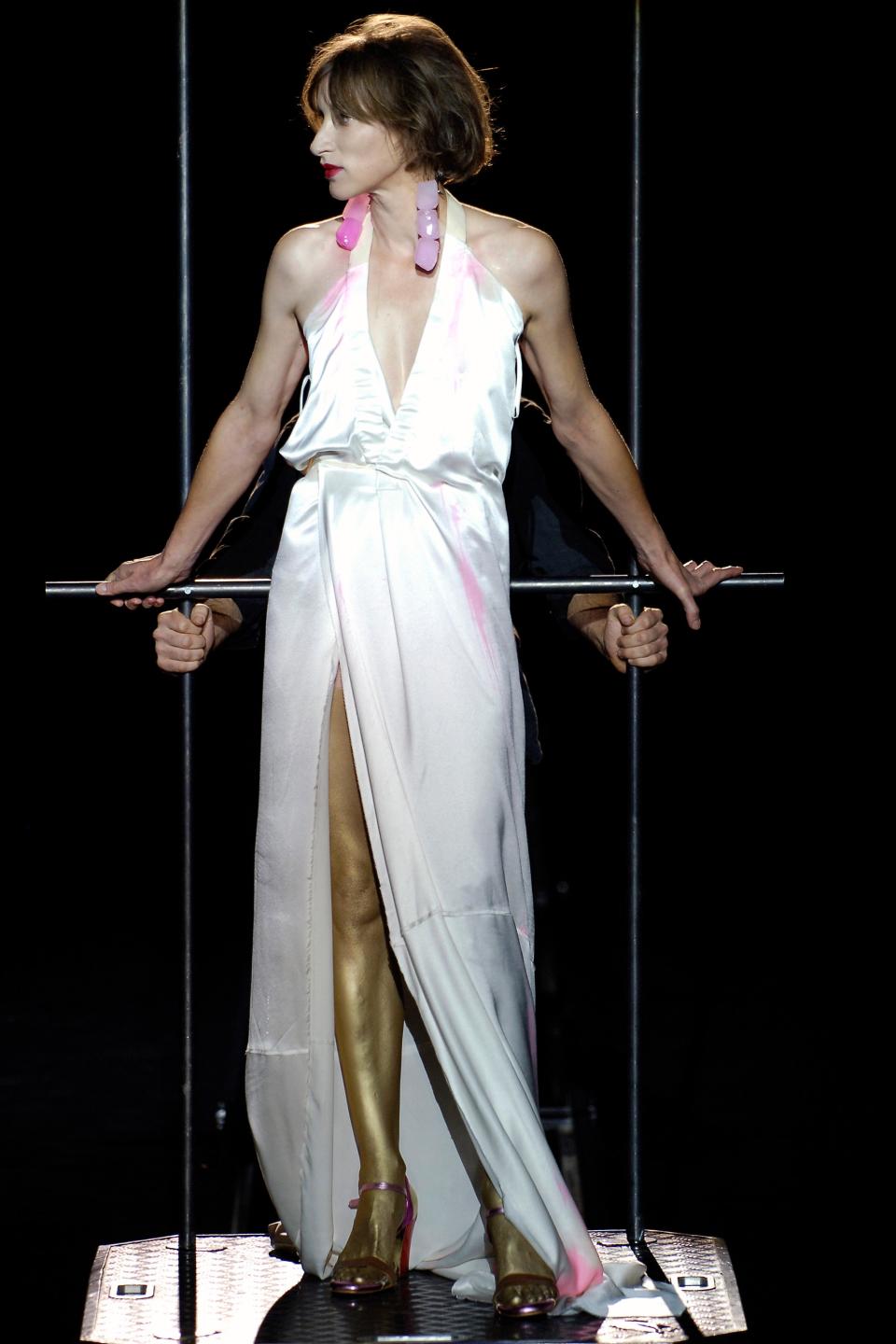
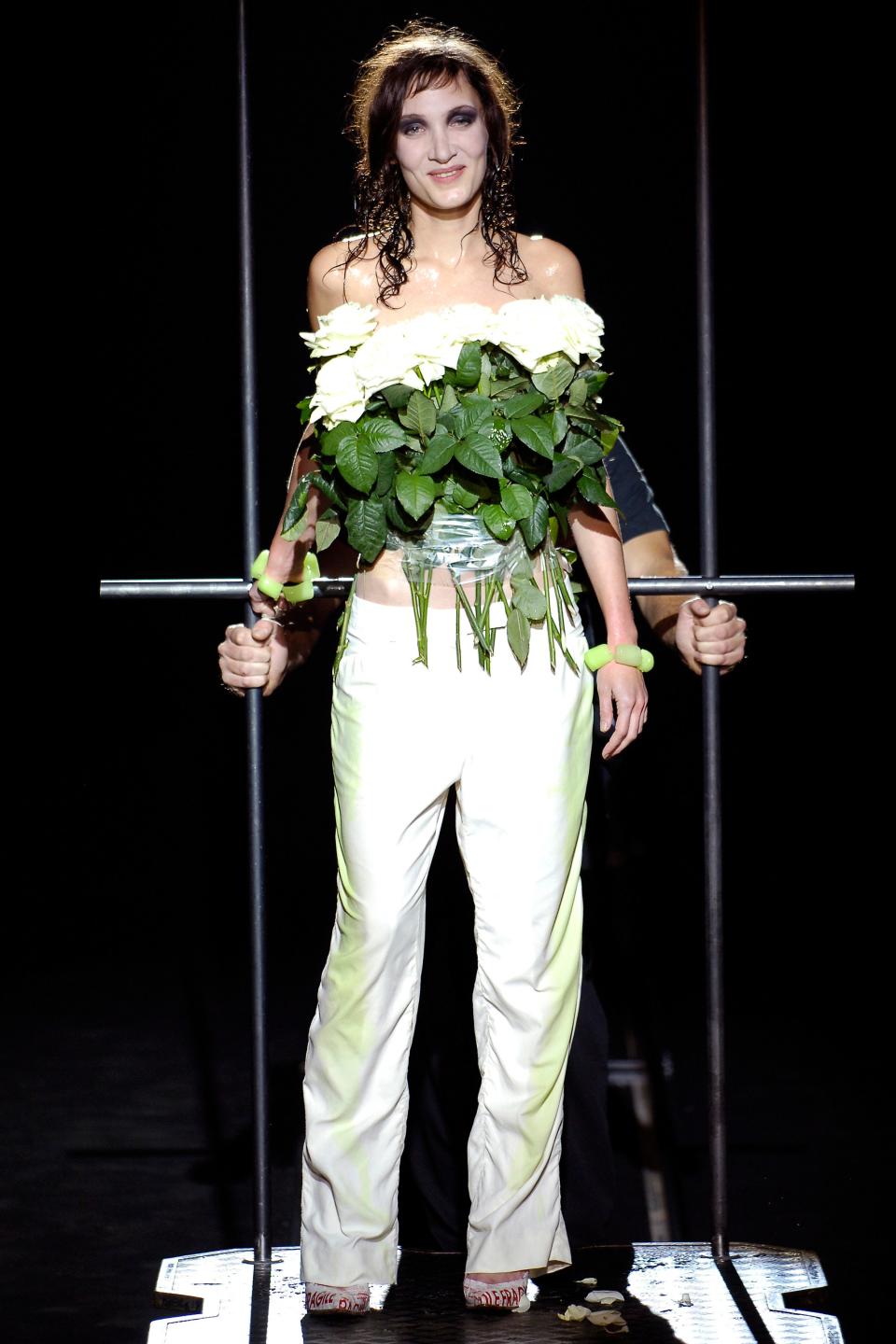
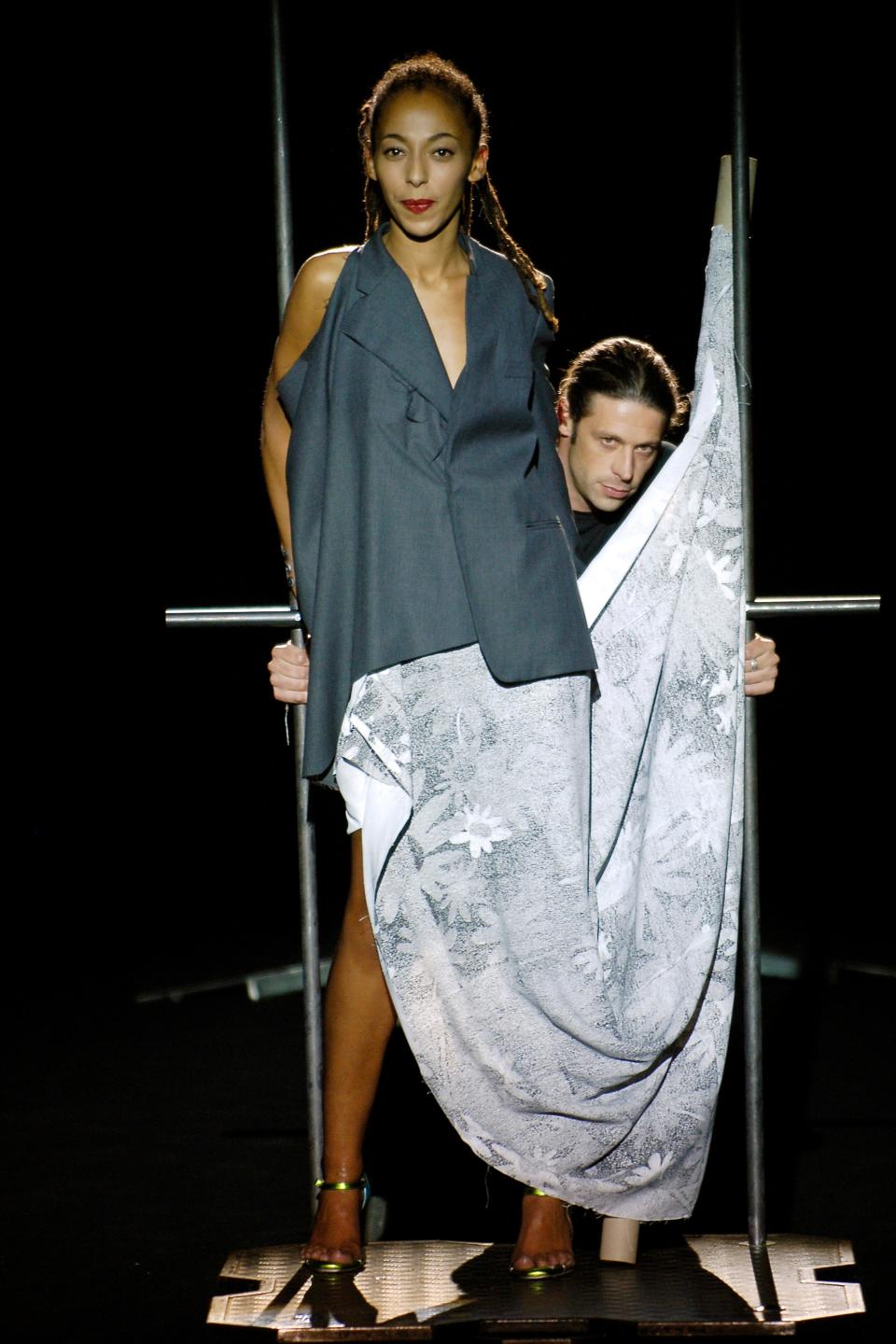
This story is part of a series, Past/Present, highlighting images and articles from Vogue that have personal significance to our editors.
The pandemic has given us more than just new everyday accessories in the form of masks and gloves. We now have a new filter through which to view and understand the world. Case in point: Martin Margiela’s spring 2006 show, which was built around the concept of dissolving fashion. At a time when our industry is in the process of reinvention, dissolution is an idea that takes on fresh meaning.
Sarah Mower, who reviewed the show, said that each of the 28 models wheeled out on individual trolleys were wearing garments that were half-finished. Pessimists might see these garments as being undone, optimists as works in progress. Revisiting this ingenious collection, it speaks to me—both in its entirety and its details—of life in lockdown.
Let’s start with first impressions: When looking at pieces like a skirt still attached to a bolt of fabric (which has become a much-copied trope) I can almost hear the voice of New York governor Andrew Cuomo speaking of “making things up as we go along” in the face of never before imagined conditions. That Margiela made room for randomness in his work is beautifully illustrated in the show’s jewelry, which was made of ice cubes dyed magenta, blue, and green, which melted onto garments, coloring them in real time. It would be a mistake to think that the designer was impulsive, however. Those trolleys ran on train tracks. Indeed, there was a reasoning behind each collection, a message to be made. Purposeful resourcefulness is the bedrock of Margiela’s work, ingrained, perhaps, from childhood; his mother refurbished furniture.


But back to the ice cube jewelry (which I’m very tempted to try to make at home). Some of the models wear overblown rings as pendants, while others sport baubles made of frozen water. Ice, of course, is slang for “diamond.” In 2006 Margiela seemed to be asking us to consider what we assign value and why. The pandemic has raised the same questions.


Though there are many then-and-now points to be teased from this show, I’ll focus on just two more. The first is the recurrence of everyday packing tape. In the 1990s Margiela had made tabi sandals that were just soles meant to be attached to feet with clear adhesive. In this collection he made use of white tape with red type reading “fragile.” It’s wrapped across hips and around shoes. And my heart.
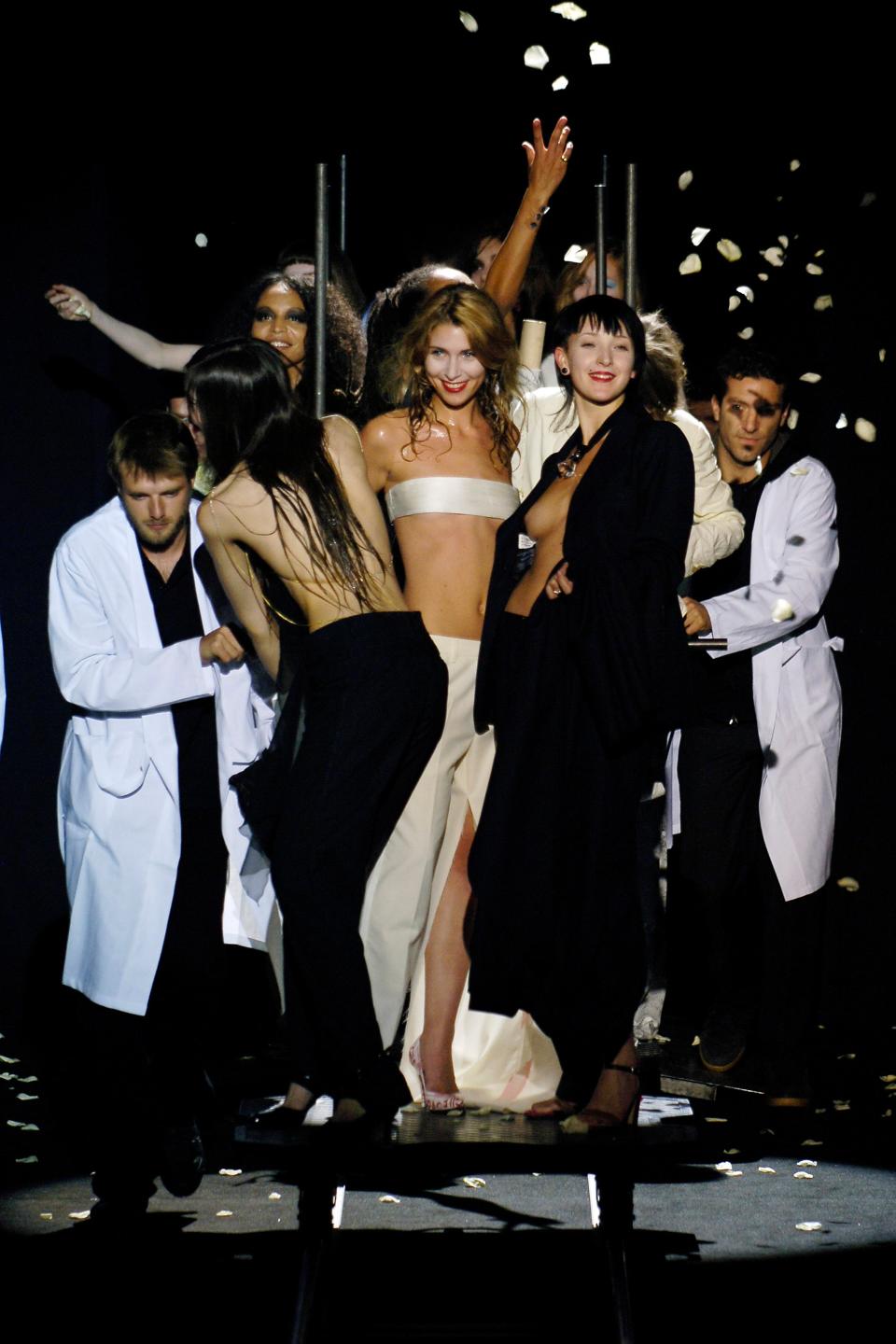
I don’t think I’m alone in feeling vulnerable in the face of the pandemic; perhaps that’s why I also made note of the crew in this show. Margiela’s early collections were marked by familiar and familial aspects, with people gathering at a public playground to take in a show, or enjoying a sip of wine in a plastic cup during a presentation. Though Margiela himself was never seen, there was transparency in how the company worked. Often staff played a role. In this case, there are a cadre of men dressed in black pushing the trolleys. At the finale, staff members in white coats join the models. It’s a tradition that couturiers wear white coats when working in their ateliers. These garments were a uniform chez Margiela, where they also seemed to symbolize equality, and perhaps anonymity.
White coats (and scrubs) are the kit of the heroes of the pandemic, the frontline medical workers who act on the belief that we are all in this together. Margiela’s show is a reminder that life is a work in progress and that we’re all, to some extent, making things up as we go along.
Originally Appeared on Vogue

